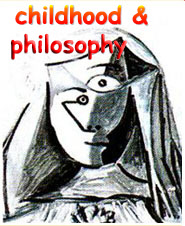"incendies" or the primary existing experience
DOI:
https://doi.org/10.12957/childphilo.2016.23336Abstract
Two births, five silences. In the film Incendies, childhood is represented as the experience of being marked by the profound and special relationship between traveling and inhabiting a space that is analogous to the suffocation of the birth experience—as that shortness of breath that results from suddenly having access to it. From the two figures of childhood that Incendie explores—birth and silence—this paper explores what it means to construct and inhabit a world through the archeological lens proposed by the German philosopher Peter Sloterdijk, which derived in turn from the thought of Heidegger and Foucault. Here, childhood is read as the primary experience of existence, as a transitional space in which is the human is built and configured. We enter to the world in transit between the primary sphere of life—the “closing mother”—and the lively and vivid sphere, identified by Sloterdijk as the "receptacle." The experience of childhood is, then, a complex process of transition between inhabited worlds, exemplifying the intensity, sympathy, admiration, bewilderment and anguish of living.Downloads
Published
2016-06-25
How to Cite
marín-diaz, dora lilia. (2016). "incendies" or the primary existing experience. Childhood & Philosophy, 12(23), 9–25. https://doi.org/10.12957/childphilo.2016.23336
Issue
Section
dossier




